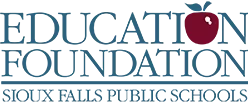Twenty-five years ago, about 94 percent of the students in Sioux Falls Public Schools were white. Today, students who are white comprise about 64 percent of the enrollment.
Diversity in Sioux Falls’ schools is likely to keep increasing because younger grades have more students of color than the upper grades.
“We’ve coming up on 37 percent racial diversity,” said Superintendent Brian Maher. “One generation ago, it wasn’t all that likely that you would see a student that wasn’t of some kind of European descent in a classroom. Whereas today, if you walk into a classroom, you have better than a one in three chance to see racial diversity in any seat in a classroom.”
The district, as a matter of policy, values its growing diversity in its quest to educate and prepare students to succeed in a changing world.
“It’s easy to say we embrace diversity. It’s a whole other step to embrace diversity. I really believe we as a district embrace diversity,” said Maher, who is in his third year leading Sioux Falls Public Schools.
The increasing diversity in schools is adding tasks to the district’s to-do list.
“We think there are several things that we should be doing,” Maher said. “One is we should be raising the cultural responsiveness of the school system.”
The district has been working on that issue with Dr. Derrick Robinson, an assistant professor of educational administration at the University of South Dakota.
The school system also is trying to increase the diversity of its staff.
Next year, the district will add courses designed for students who are interested in becoming teachers. The hope is that more students of color will consider teaching in Sioux Falls as a possible career option.
Nearly 24,000 students presently are enrolled in the district in kindergarten through 12th grade. In addition, there are more than 1,000 pre-kindergarten students.
The district grew by more than 300 K-12 students from the fall of 2016 to the fall of 2017. The biggest block of students is in K-5, with nearly 11,800 students. Grades in 9-12 have fewer than 6,800 students.
With more students enrolled in the lower grades than in the upper grades, high schools could become considerably more crowded in a few years. The increase of students in the lower grades does not appear to be a short-term bubble working its way through schools.
The school system, like the community, is growing, and the demographics appear to be changing for the longer term.
Future building needs are part of the district’s strategic plan that currently is being addressed.
Another indicator in the rising diversity of schools is how students can communicate. Ninety languages can be spoken by students in the halls of schools.
“We have an incredibly robust English Language Learners Program,” Maher said.
The district is continuously looking at how to best provide services to students who don’t speak English as a primary language in their homes, he said.
Black students represent the largest minority population in schools. They account for 11.9 percent of the enrollment. Blacks are followed by Hispanics at 11 percent and Native Americans at 4.3 percent.
“I’m very pleased at how our buildings, how our teachers, truly embrace diversity,” Maher said.
To read all of the articles in the latest edition of the Foundation Newsletter, click to download your copy. February 2018 SFPSEF Newsletter
